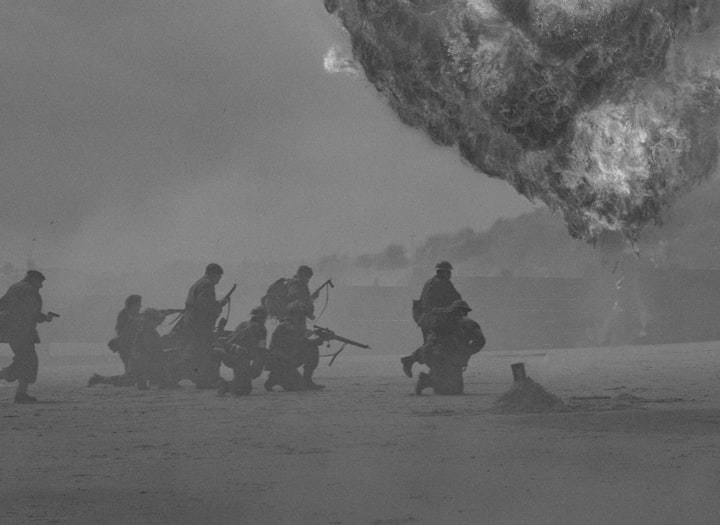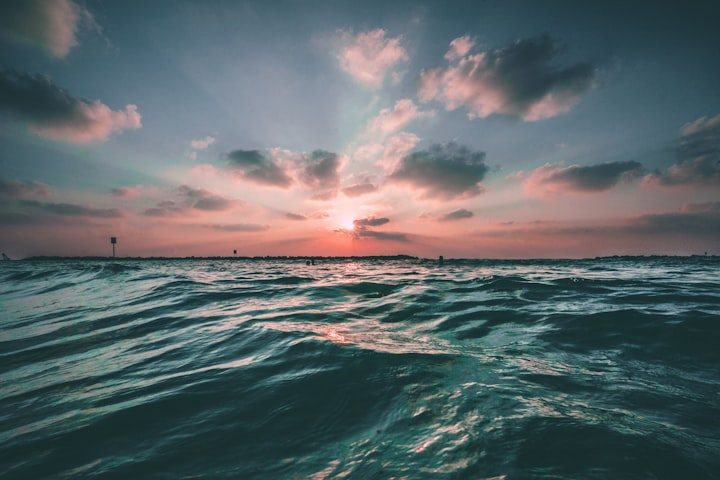
World War I, also known as the Great War, was a global conflict that lasted from 1914 to 1918. It involved many of the world's major powers, divided into two opposing alliances: the Allies (primarily composed of France, Russia, and the United Kingdom) and the Central Powers (primarily composed of Germany, Austria-Hungary, and the Ottoman Empire).
The war began on July 28, 1914, when Austria-Hungary declared war on Serbia in response to the assassination of Archduke Franz Ferdinand of Austria by a Serbian nationalist. This event triggered a series of alliances and treaties, ultimately leading to a global conflict.
The war was fought on multiple fronts, including in Europe, Africa, and the Middle East. The Western Front was the main theater of war, where both sides dug trenches and engaged in brutal trench warfare. The Eastern Front saw major battles between Germany and Russia, while the war in Africa and the Middle East involved colonial powers fighting for control of territories.
The war saw the use of new technologies, such as poison gas and tanks, which added to the already high casualty rates. It also had a significant impact on civilian populations, with millions of people displaced and many more losing their lives due to the effects of the war.
The United States entered the war in 1917, tipping the balance in favor of the Allies. The war officially ended on November 11, 1918, with the signing of the Armistice of Compiègne, which led to the eventual Treaty of Versailles.
The war had far-reaching consequences, including the death of millions of people, the collapse of empires, and the redrawing of national boundaries. It also set the stage for the rise of totalitarian regimes, such as Nazi Germany, and the outbreak of World War II.
CAUSES FOR WORLD WAR 1
The causes of World War I were complex and multi-faceted, with several factors contributing to the outbreak of the war. Some of the major causes include:
Alliance Systems: The complex web of alliances between various European nations created a situation in which any conflict between two countries could quickly escalate into a wider war. The Triple Entente (Britain, France, and Russia) and the Central Powers (Germany, Austria-Hungary, and Italy) were the two main alliances.
Militarism: The arms race that had been taking place in Europe for decades prior to the war created a culture of militarism in which military power was seen as the ultimate measure of national strength. Countries were building up their armies and navies in anticipation of potential conflicts.
Imperialism: The competition for colonies and territories around the world fueled tensions between European powers. There were several conflicts over control of territories in Africa and Asia, and countries were eager to expand their empires to gain economic and political power.
Nationalism: Nationalism, or the belief in the superiority of one's own nation or culture, was a powerful force in Europe at the time. This led to tensions between different nationalities within countries, as well as between different countries.
Assassination of Archduke Franz Ferdinand: The assassination of Archduke Franz Ferdinand, heir to the Austro-Hungarian throne, by a Serbian nationalist in June 1914 was the immediate trigger for the war. Austria-Hungary declared war on Serbia, which led to a series of alliances being invoked and the war quickly escalating.
These factors all contributed to the outbreak of World War I, creating a situation in which a small spark could quickly ignite a much larger conflict.
MAJOR POWERS IN WORLD WAR 1
The major powers involved in World War I were divided into two main alliances: the Allied Powers and the Central Powers.
The Allied Powers consisted primarily of:
France
Russia (until its withdrawal from the war in 1917)
The United Kingdom (including the British Empire and Commonwealth)
Italy (from 1915 onwards)
United States (from 1917 onwards)
Other countries that joined the Allied Powers later in the war included Japan, Greece, Belgium, Serbia, Montenegro, Romania, and Portugal.
The Central Powers consisted primarily of:
Germany
Austria-Hungary
Ottoman Empire (Turkey)
Bulgaria
These countries were supported by other smaller states and territories, including Bavaria, Saxony, Württemberg, Bosnia and Herzegovina, and the Kingdom of Poland.
It is worth noting that many other countries and territories around the world were also affected by the war, either through direct involvement or by providing support to one side or the other. For example, many colonies and territories in Africa, Asia, and the Pacific were drawn into the conflict, either through their ties to European powers or because they were used as bases for military operations.
MAJOR BATTLESIN WORLD WAR 1
World War I was fought on multiple fronts and involved many major battles. Here are some of the most significant battles of World War I:
Battle of the Marne (1914): This battle marked the end of the German advance into France and the beginning of the trench warfare that characterized much of the rest of the war.
Battle of Gallipoli (1915-1916): A failed attempt by Allied forces to capture the Ottoman Empire's capital, Constantinople, by attacking through the Dardanelles Strait.
Battle of Jutland (1916): The largest naval battle of the war, fought between the British Grand Fleet and the German High Seas Fleet in the North Sea.
Battle of the Somme (1916): One of the bloodiest battles in history, fought between Allied and German forces in northern France. Over one million soldiers were killed, wounded, or captured during the five-month battle.
Battle of Passchendaele (1917): A battle fought between British and German forces in Belgium, characterized by heavy rain, mud, and high casualties.
Battle of Cambrai (1917): A battle fought between British and German forces in northern France, notable for the first successful use of tanks in a major battle.
Battle of Amiens (1918): A decisive battle fought between Allied and German forces in France, which marked the beginning of the Hundred Days Offensive, a series of Allied victories that ultimately led to the end of the war.
These are just a few examples of the many battles that were fought during World War I. The war involved multiple fronts and theaters of operation, and saw the use of new technologies and weapons that had a profound impact on warfare in the 20th century.
WEAPONS USED IN WORLD WAR 1
World War I was characterized by the use of new and deadly weapons that had a significant impact on the nature of warfare. Here are some of the main weapons used during the war:
Rifles: The primary infantry weapon during the war, rifles such as the British Lee-Enfield and the German Mauser were accurate and deadly at long ranges.
Machine guns: Machine guns such as the British Vickers and the German Maxim played a significant role in the trench warfare that characterized much of the war, inflicting heavy casualties on advancing troops.
Artillery: Artillery pieces such as howitzers and field guns were used extensively during the war, firing high explosive shells that could destroy trenches and fortifications.
Poison gas: The use of poison gas was one of the most terrifying aspects of World War I. Chemical weapons such as chlorine and mustard gas caused horrific injuries and death, and had a profound psychological impact on soldiers.
Tanks: Tanks were first introduced in World War I and quickly became a formidable weapon on the battlefield, able to cross trenches and other obstacles and provide cover for advancing infantry.
Aircraft: Aircraft were also used extensively during the war, primarily for reconnaissance and observation purposes, but also for bombing and strafing enemy positions.
Submarines: The German U-boat was a highly effective weapon in the naval war, sinking hundreds of Allied ships and threatening the British blockade of Germany.
These weapons, along with other innovations such as flamethrowers, hand grenades, and barbed wire, contributed to the unprecedented levels of death and destruction that characterized World War I.
END OF WORLD WAR 1
World War I came to an end on November 11, 1918, with the signing of the Armistice of Compiègne between the Allies and Germany. The armistice marked the end of hostilities on the Western Front, and led to the gradual demobilization of troops and the eventual return of peace to Europe.
The terms of the armistice required Germany to withdraw its troops from all occupied territories, including Belgium, France, and Luxembourg, and to surrender significant amounts of military equipment and weapons. The Allied blockade of Germany was also to continue until the signing of a formal peace treaty.
The armistice was followed by the Paris Peace Conference, which began in January 1919 and was attended by representatives of 32 countries, including the victorious Allied powers and Germany. The conference was tasked with negotiating a formal peace treaty to officially end the war.
The Treaty of Versailles, signed on June 28, 1919, was the most important of the treaties that ended World War I. It imposed harsh penalties on Germany, including the payment of massive reparations, the loss of territories, and severe restrictions on its military capabilities. The treaty also established the League of Nations, an international organization aimed at maintaining world peace and preventing future wars.
The end of World War I marked a turning point in world history, with the destruction and devastation of the war leading to profound changes in politics, society, and culture. The war also set the stage for the geopolitical tensions and conflicts that would define the 20th century, including World War II and the Cold War.
IMPACT ON WORLD WAR 1
World War I had a profound impact on the world, both during and after the conflict. Here are some of the key impacts of the war:
Casualties: The war resulted in the deaths of an estimated 8.5 million soldiers and 13 million civilians, and caused millions of injuries and disabilities. The human cost of the war was staggering, and had a profound impact on families, communities, and nations.
Political and Social Changes: The war led to significant political and social changes in Europe and around the world. It marked the end of empires and monarchies, and the rise of new political systems such as communism, fascism, and democracy. The war also brought about significant social changes, including the expansion of women's rights and the growth of civil rights movements.
Economic Impact: The war had a profound impact on the global economy, with significant destruction of infrastructure and resources. The cost of the war was immense, with estimates of total economic losses ranging from $186 billion to $338 billion in today's dollars.
Technological Advances: The war saw significant technological advances in areas such as aviation, chemical warfare, and tank warfare. These advances would have a lasting impact on warfare and technology.
Treaty of Versailles: The Treaty of Versailles, signed at the end of the war, imposed significant penalties on Germany, including the payment of reparations and the loss of territories. This contributed to the rise of Hitler and the Nazi party in Germany, and ultimately led to the start of World War II.
League of Nations: The League of Nations was established as a result of the war, with the aim of preventing future conflicts and promoting international cooperation. Although the League ultimately failed to prevent the outbreak of World War II, it set the stage for the development of the United Nations after the end of World War II.
In summary, World War I had a profound and lasting impact on the world, shaping politics, society, and culture in ways that are still felt today.
About the Creator
Prasanna S
.I AM WRITER , A STORY TELLER ,A LUNATIC. I IMAGINE IN A PARELLEL UNIVERSE I MIGHT BE A CARICATURIST OR A BOTANIST OR SOMEWHEREASLEEP ON THE MOON BUT HERE I AM WRITER TURNING MOMENTS INTO MULTIVERSES AND MAKING HOMES OUT OF THEM





Comments
There are no comments for this story
Be the first to respond and start the conversation.